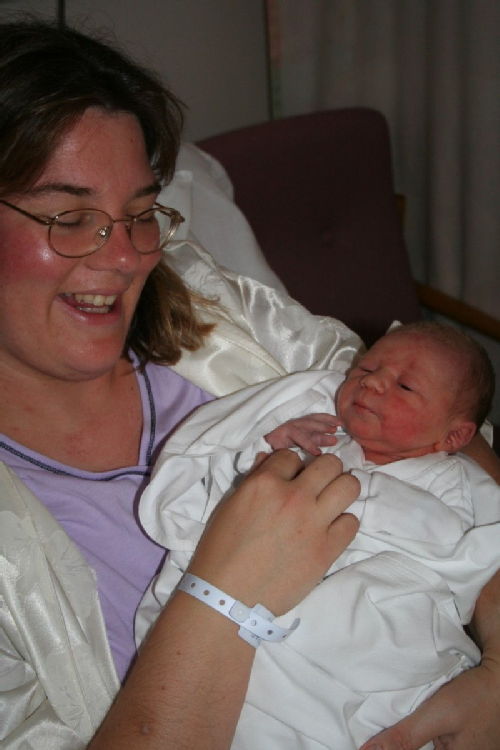All 30 entries tagged Travel
View all 0 entries tagged Travel on Warwick Blogs | View entries tagged Travel at Technorati | View all 20 images tagged Travel
October 06, 2005
Bike Report: Advanced motorcycle training session 1
Follow-up to Manifesto: safe motorcycling is possible, but is the responsibility of the rider from Transversality - Robert O'Toole
For over two hours, the instructor, Bob from Kenilworth (RoSPA registered), followed me as I rode fast but (fairly) smoothely around Warwickshire. With Bob directing me along some challenging and testing corners and junctions, I really did have to work quite hard. I'm completely comfortable with almost all aspects of advanced riding techniques, and followed Bob's instructions to ride in my normal style. However, I did feel the need to push slightly harder in corners, considering Bob was riding a Triumph Daytona 955i sports bike (twice as powerful as my trail bike).
At the first stop, Bob told me that observing my ride was rather dull – not because I was going to slow, but because I was making no mistakes. I already have most of the skills and techniques that are taught on an advanced riding course. There were a few of useful points:
- I shouldn't do an un-necessary "over the shoulder" life-saver check when overtaking, I should already know what is behind me from previous mirro observation. This is different to the advice given to new riders, but makes sense for a fast rider who should spend more time looking forwards. A life-saver when accelerating out of a 30 mph zone is essential, as dumb car drivers will try to overtake a bike that is sticking to the speed limit. They do this all the time, despite the fact that I can accelerate twice as fast as them with no warning.
- Indicate only when it will actually make a difference to other road users. This is the advice of the Police book. It saves time, allows for concentration on taking information and manouvering, and avoids the problem of forgetting to cancel an indicator.
- Get into position to observe into the vanishing point of a bend earlier.
- Use other cues to observe the bend – tree lines etc.
Bob did quickly identify that my cornering isn't smooth enough. I need to plan better, observe and act decisesively, and accelerate through the bends. Even after 45,000 miles, I still find the GS Dakar a little intimidating in bends. It weighs almost 300kg (100kg more than a sports bike), and has dual-purpose tyres that tend to slide around. But I must remember that there are many riders who can ride GS bikes very fast.
At the end of the ride, Bob gave an amazingly detailed account of the whole ride. He identified many of the interesting incidents, and commented on how well I dealt with them, and what I can improve. On the whole, Bob was very positive about my riding. He even said that I only need a little practice before I can take an advanced riding test. Following the Roadcraft principles, I can ride very safely. He suggested that I join IAM and become a registered observer.
I shall now practice some bends. And then more lessons with Bob, which are really worthwhile.
September 25, 2005
Baby Report: I demand one million sweets!
Follow-up to Baby Report: The latest photos of Lawrence from Transversality - Robert O'Toole
I'm still not convinced that Lawrence O'Toole really is my son. You decide...
Baby Evil (left) and Dr Evil (right). Are they by some chance related? I think we should be told.


September 15, 2005
Manifesto: safe motorcycling is possible, but is the responsibility of the rider
The advice is compiled from advanced motorcycle training guides, and much experience, as in 75,000 miles of experience. It is also the result of a fundamental difference between car drivers and motorcyclists. Car drivers pass their test and never give a second thought to road safety and driving skills. Pick up this months copy of the leading motorcycle magazine RiDE, and you'll see that the main article (featured on the front cover) is an in depth analysis of safe overtaking techniques.
The guiding principle behind much work by the police, DoT and other bodies is that by applying these principles, accidents can be reduced dramatically. This is well worked out craft. The police even have a formal system governing every aspect of how they ride. Obviously some accidents will still happen. For example, a rider being hit by debris on a Catalan motorway can do little to predict or avoid disaster (although wearing a helmet gives him a life-saving advantage over a car driver who would be killed by an object smashing through their screen).
To begin, we have the most dramatic statistic, proving what all motorcyclists know, that they get it wrong in bends.
- lost control on right hand bend – 16.7%
- lost control on left hand bend – 13.7%
- motorcycle crosses carriageway on l/h bend and collides with oncoming vehicle – 5.9%
- motorcycle crosses carriageway on r/h bend and collides with oncoming vehicle – 3.9%
Yes, the fact is that most accidents are caused by riders simply not understanding how to go around corners. This is essentially alleviated by a formal method of control: adjusting the speed of the bike in accordance with the distance of the "vanishing point" of view away from the direction of travel of the bike.
Here's the trick: the further to the left or the right the point is, the more extreme the bend. If the point is moving quickly away, then the bend is tightening fast: slow down. If the point suddenly moves to the center, and forwards observation (of tree lines, hedges etc) suggests that a straight is ahead, it is time to accelerate. If the point stays to the side but is stable, then you're on a perfect sweeper. This is a technique that requires practice and constant monitoring. It must be taken very seriously.
The aim is to enter a bend so that sudden deceleration in not necessary, and the bike can smoothly accelerate through it. In addition, the official police method advises that the position of the bike be adjusted to gain a better view around the bend. For example, in a left hander, move over to the right to get a better view. Further issues to be taken into consideration include the observation of adverse camber, road surface and debris, and mid-bend junctions. Speed must also be adjusted so that the motorcycle may be braked within the limits of forward vision available into the bend. In other words, don't ride around a blind corner and slam into a stationary vehicle.
- right turning vehicle hit by overtaking motorcycle – 12.7%
Simple. Absolutely never overtake at a junction, or anywhere that this may happen. However, it is probably the case that many riders just do not realise that they are overtaking at a junction. This is alleviated by adopting the correct observation position on the road whilst judging if the overtake is safe. That means dropping back and moving around the road to take better information. If there is any doubt, just don't do it. There will always be another opportunity to pass a little further down the road. As a final extra precaution, during the day go to full-beam and produce more noise before commencing the overtake.
- motorcycle hit by emerging vehicle at junction – 9.8%
- motorcycle collides with vehicle turning right across its path – 7.8%
Forward observation is essential. Always assume a road position that offers as wide a field of view as possible. That means dropping back from the car in front. Always ensure that drivers of cars at junctions are looking your way. Use your horn and engine noise to attract attention. If in any doubt, slow right down – this makes little difference to a bke, which can easily gain speed again.
- motorcycle collides with rear of stationary vehicle at junction – 7.8%
I can't imagine how this can be caused by anything other than tiredness or riders not appreciating that their bikes accelerate twice as quickly as a car.
- fell off – 6.9%
Practice control! Many of these are slow speed manouvres, particularly difficult on sports bikes with limted steering lock.
- collisions on roundabouts – 6.9%
I assume that there are three causes for this:
- The traffic on the roundabout suddenly stopping (a common occurrence), the bike is cranked over to enjoy the corner, and hence cannot do an emergency stop. Solution: never lean hard in a roundabout that has traffic in front.
- Spilt diesel on roundabouts. Scumbag drivers of poorly maintained commercial vehicles spill diesel as they go around. For a cranked-over motorcycle on a wet road this means loss of control. Go slow on wet roundabouts.
- Vehicles coming onto the roundabout into the path of the bike. Solution: never ride beyond the limits of your view. If you can't see what is coming onto the roundabout, slow down. Secondly, never trust car drivers to see you at a junction. If necessary, slow right down. Use your horn, that's what it is for.
There are two causes of this, the first of which is entirely avoidable:
- The braking power of modern bikes is far greater than any other vehicle. This is good if you have to stop in a hurry. However, you will always out-brake the moron tail-gating car driver behind. They only ever watch brake lights, they will not predict that you are about to stop dead in a fraction of a second. Solutions: leave plenty of space for smoothe slow braking. Control the car behind through slowing it down, and through touching the brake leaver early to engage the brake lights, even when not actually braking.
- You are at the back of a stationary row of traffic. A driver simply fails to see you. Solutions: high visibility clothes. Also, always leave some space in front so that you can roll into it if a car seems to be driving towards you to quickly. Car drivers will find this hard to believe, but if I am ever in this position, I watch what is happening behind, and I will roll forwards just in case.
OK, ultimately the world is not entirely predictable. Random accidents happen. For example, I once saw a car the screen of which had been punctured by iron bars knocked from a fence on an overpass above. In such a case there is nothing that can be done. If you buy the best helmet, kevlar armoured clothes, gloves and boots, you stand a better chance of survival.
The ultimate aim of motorcyling, whether as a sport or as a daily activity, is as follows: make rapid progress, smoothely, in complete control, and without any mistakes. Remember that Valentino Rossi is MotoGP champion because he goes fast, stays in control, and doesn't crash.
September 09, 2005
Reflection: The best things that I have done
Follow-up to Reflection: My personal manifesto from Transversality - Robert O'Toole
It's interesting to note that few of these represent my work in e-learning, despite that being of very great importance to me. There are just no "big achievement" moments. We have made much progress, but it seems to be slow and incremental. This might be simply because we just aren't brave enough to go for recognisable big achievements. Also to note is the lack of team achievements, apart from the many things in the list carried out by Emma and I. That says a lot about the kinds of teams that I have been in. Again they have focussed upon small incremental change rather than big news-worthy achievements.
What is also of great significance is that, although the items on the list below may seem really good, to me it is mostly insubstantial. It doesn't add up to much other than merely being entertained by the world. To me that just is not good enough. Maybe I am unrealistically ambitious. Perhaps it is the case that most people are just too easily satisfied with what really just amounts to passive entertainment. Anyhow, there's nothing on this list that resembles the achievements of the people I really admire.
Here's the list…
- Reading Anti-Oedipus from cover to cover, and understanding it.
- Completing my undergraduate dissertation on Kant, Nietzsche, Deleuze and Guattari.
- Presenting a paper at Virtual Futures.
- Getting a first.
- Our wedding at Jijima.
- Getting a paper published in a book on Deleuze.
- Speaking at the Shock of the Old conference at Oxford.
- Walking with Jim and Mari in a frozen Port Meadow, Oxford.
- Scotch bonnet chilli eating showdown with Mari and Jim.
- Eating samphire for the first time (in Dorset).
- Swimming in big waves at Porthkernow, Cornwall.
- Seeing big paintings by Miro at the Foundacio Miro.
- Sleeping on the grass in the Real Alcazar gardens in Seville.
- Watching a hummingbird in a car park at Oracle in San Francisco.
- Seeing the Cloudbusting video with Kate Bush and Donald Sutherland.
- Listening to the Hounds of Love album for the first time.
- Being in a herd of 500 elephants at Chobe.
- Camping alone at Ngwethla Pan in Hwange, and getting chased away by elephants.
- Hearing lions in the camp site at Ngwethla Pan.
- Being chased by a honey badger at Sinamatella, Hwange.
- Driving to the Grand Erg Chebbi dunes at Merzouga in the Sahara.
- Walking to the top of a big Sahara dune.
- Crossing through the snow line in the Atlas mountains in Morroco.
- Crossing back through the Tizi-en-Tichka pass in a storm.
- Driving to the Atlantic at Lamberts Bay, South Africa.
- Seeing flamingoes in the Sahara, the Karoo, and millions of them flocked in the Makgadikgadi Pans in the Kalahari.
- Seeing the Makgadikgadi pans full of water.
- Driving through the West Caprivi, Namibia in an old Hilux bakkie.
- Walking through a pride of lions with Frank Watts at Shimuwini, Kruger Park.
- Seeing lions at night in the Kruger Park.
- Seeing the Marsh Owl doing its silly walk at night in the Kruger Park.
- Seeing a wild elephant for the first time, along the road between Nata and Kasane in Botswana.
- Flying over the Okavango Delta in a small plane, and seeing a herd of a thousand buffaloes.
- Floating along the Delta in a mokoro with Obe.
- Staying at Delta Camp, Okavango, Botswana.
- Having my leg bitten by a (baby) lion.
- Seeing an african wild dog pack in Savuti.
- Watching a cheetah catch a springbok in the Kalahari (Transfrontier) Gemsbok Park.
- Getting soaked crossing the foot bridge on the Zambian side of Victoria Falls.
- The end of the trans-Africa chapter of Jupiter's Travels.
- Riding with Ted Simon at the end of his RTW.
- Riding my GS cross-country from Cherbourg to Nouailles (near Villefranche-le-Rouergue east of Toulouse) in a day.
- Riding across the Pyrenees on a small road somewhere east of Andorra.
- Riding around the Place d'Catalunya in Barcelona 5 times before admitting that I was lost.
- Riding from Shaftesbury to Stonehenge off-road in heavy rain with CW's.
- Kick starting my R100GS-PD for the first time.
- Passing the direct access motorcycle test.
- Riding a 1000 miles in a day, Oxford to Toulouse.
September 05, 2005
Reflection: My personal manifesto
On a more positive note, I can say that I already have many of these, in some cases (the owls that i can hear as i write this) all the time. Others I get occassionally but often enough (elephants). It certainly is the case that I do what I do (e-learning, philosophy) because my work may make many of these things more possible and common for me and others. However some, i just don't get at all (good cafes). And the purpose of this manifesto? Entirely selfish. I just want more of the things that I like…
- To be able to walk from home to a good cafe. Sit outside in the summer. Waiter service. No smoking. Comfortable chairs.
- Good coffees and food. No music. Read a good newspaper. Meet people. Intelligent discussion. Use wifi.
- Cooking a different recipe every day, with fresh organic ingredients. Mediteranean food. Hot chillis. Fresh herbs from the garden. In season vegetables. Local growers and suppliers. Helpful shop assistants. A glass of good wine.
- Cooking African style braiis (barbecues) with good beef and boerwors.
- Friends visiting often for coffee, and expecting me to visit them (without planning or scheduling).
- Discussing philosophy, art, people, plans for hours.
- Maps.
- Reading and writing books that create new concepts, that fundamentally alter the world in positive ways, that carry people forwards and away on new streams of activity, out of tired and un-productive traps.
- Teaching that has an immediate, lasting and positive effect.
- Working on projects that produce brilliant and positive results, getting feedback, building communities and traditions.
- Working with enthusiastic, (deeply) dedicated, people with expertise and a sense of excitement.
- Experiencing stunning art and theatre that finds itself repeated, in unforeseen ways, in life beyond its frame or stage.
- Riding my GS all day on a dry dirt road with dramatic scenery.
- Driving through wilderness with my wife and baby in an old bakkie.
- Crossing long stretches of terrain and seeing the land slowly change.
- Meeting people in resilient, live, communities embedded in and emergent from their unique localities and histories.
- Trying new local foods in new places.
- Camping alone in the wilderness, with only the sounds of nature and a wood fire.
- Living near owls, buzzards and kites. Eagles and vultures in the wild.
- Watching wild animals and birds. Watching elephants in the water. Big herds of game. Watching wild dogs, cheetahs, and predators.
- Desert dunefields, salt pans, flamingoes.
- Mountain passes and gorges, being above the treeline and in the snow.
- Walking along the sea. Catching fish to eat. Watching whales and dolphins. Good fish and chips. Samphire. Oysters.
- Walking in quiet english countryside, finding fruit to eat on the trees.
- Canoeing along gentle but wild rivers.
- Travelling silently by mokoro in the Okavango Delta.
- Thoughtful journalism (and television) offering new and surprising theories and models about the world.
- Reading and writing about travel, by great authors (Ted Simon, Dervla Murphy).
- Having new music to listen to often. African music. Oliver Mtukudzi. Youssou N'dour. Aster Aweke.
- New music by Kate Bush. Old music by Kate Bush. Any music by Kate Bush.
September 04, 2005
Travel Report: using Metzeler Tourance tyres off–road
Follow-up to Travel Report: off–road GS photos from Transversality - Robert O'Toole
After the heavy rain we have had this week, I thought that my trail riding practice session on Saturday morning would be quite difficult. The Metzeler Tourance tyres that I have on my R100 GS PD are a good compromise between road and trail. However, the tread tends to fill up in muddy conditions, with no self-cleaning action. This reduces grip, especially when crossing ruts. The consequence being that the rear end is thrown out sideways.
Here's a photo showing the tread on a dry track:

The trick is to reduce the pressures by 1 bar at the front and back. This keeps more of the tread in contact, with the result being much greater control. The R100 GS PD, as with all Boxer GSs (not F650 or G/S), has no problem with tyre creep at low pressures, as it uses the Akront tubeless spoked rims.
Once back on the road, I reinflated to 2.4 and 2.9 bar, and after shedding the remaining mud from the tread, was able to ride fast like a road bike.
August 30, 2005
Baby Report: JDOM code for appending Lawrence
Follow-up to Baby Report: The latest photos of Lawrence from Transversality - Robert O'Toole
Element robert = reality.getRootElement();
Element lawrence = new Element("Lawrence");
robert.appendChild(lawrence);
However, if I try the following:
Element robert = reality.getRootElement().getChild("robert");
Element emma = reality.getRootElement().getChild("emma")
Element lawrence = new Element("Lawrence");
robert.appendChild(lawrence);
emma.appendChild(lawrence);
I get a nasty error message stating that the element lawrence cannot be appended to more than one parent element. Does XML only support single parent families? Should i be doing something tricky with XLink? Help!
August 29, 2005
Travel Report: off–road GS photos
Follow-up to Travel Report: Napton to Hellidon off–road on a GS from Transversality - Robert O'Toole
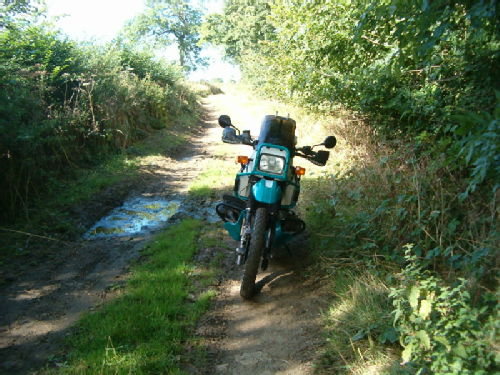

August 20, 2005
Baby Report: The latest photos of Lawrence
Follow-up to Baby Report: Meet Lawrence O'Toole from Transversality - Robert O'Toole
More photos of Lawrence...
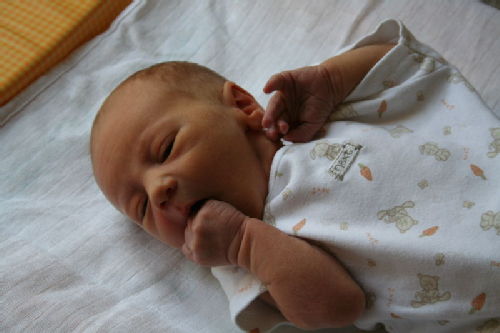

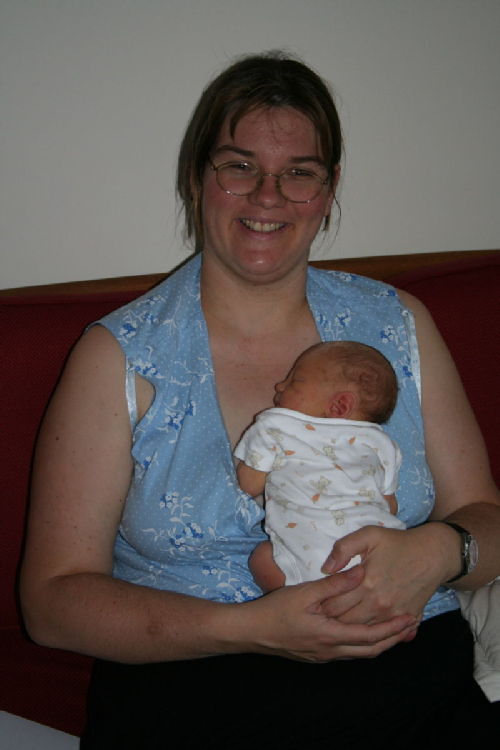
July 26, 2005
Gadget Report: new RiDE magazine review of my GS bike
This month the British motorcycle magazine RiDE contains an article reviewing 6 of the BMW Gelandestrasse bikes from the last 25 years. The GS is considered by many to be the greatest series built, and definitely one of the toughest vehicles. Much has been written about them, but RiDE's description of my GS Paris Dakar is perhaps the most accurate.

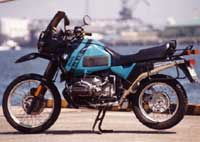
..the best looking bike, the neat White Power shock, the gorgeous Paris-Dakar tank and special paintwork. The bike looks like it belongs on a gin palace in Monte Carlo bay being pampered by Playboy bunny girls…
12 years old, a pensioner by bike standards, and still being described by the coolest bike magazine as the best GS - a Hugh Hefner of a bike! As for the test, which included both road and serious off-roading:
…the 100 felt it would simply keep on leaning…the 100 BMW found a balance of chassis and power that's a match for any of its descendents.
I had better start riding a bit more excitedly then!
And on the bumpy stuff it's smooth and poised. It's also more sure-footed than either the later 1100 or 1150 Adventure.
Juggling clutch, brake and power on tight turns is simple and the riding position feels spot on.
Wow. I'll be going the long way round then. Or at least i'll go for a run down the Oxford Track byway if it stays dry.
July 18, 2005
Discussion Primer: More evidence of the appaling state of the NHS
A report on the Today programme this morning made clear the worries of many who have to deal with the NHS for maternity services.
Britain has the third worst infant mortality rate in Europe. Slovakia is worse. And more worryingly, the hospitals will not admit that they have a problem. They just spend more on drugs and surgery, staggering amounts of money in comparison with other European countries. The government is having to resort to direct control over the worst units, applying 'special measures'. The inspector who was interviewed stated that a lack of co-ordination, poor leadership and a lack of training is behind this. However, the message seems to be that the midwives are good, and where the service is led by midwives, it can be excellent. The division between midwives and doctors is well documented, and illustrates some of the fundamental cultural issues that may prevent the NHS from ever becoming a success.
I do believe that Warwick Hospital is one of the really good ones. However, even there we have already experienced a lack of co-ordination and some poor quality doctors who seem to be working according to rigid and simplistic procedures, and concerned primarily with avoiding medical negligence claims. This latter problem is very serious. They mention it constantly, which is not surprising considering the vast amount of damages that get awarded against the NHS in this part of the service. The result is that doctors will follow the guidelines to ensure that they have official back-up for every act, thus reducing individual consultation time, and failing to treat cases on an individual basis.
I have no idea of how the NHS can be fixed. The problems run too deep. My expectation is that the politicians will continue to fiddle with it for a couple of more years, and then decide that it is just too difficult. They will eventually avoid the responsibility with a rapid sell-off. Anyone got any better ideas?
__
Comments welcome!
July 16, 2005
Travel Report: Napton to Hellidon off–road on a GS
Follow-up to CW Motorcycles off road ride, Shaftesbury to Stonehenge from Transversality - Robert O'Toole
The trail that runs from just south of Napton on the Hill to Hillindon is one of the few legal byways in Warwickshire. This morning I rode my BMW R100 GS-PD along it.
I had expected the track to be much more rough than it is. Compared to the byways that I know in Oxfordshire, it is smooth and free of the big ruts and pools caused by morons in top of the range 4×4s. This is good to see. Clearly some bikes had been down it recently, but in a sensible manner. The dry weather helped. As I have Metzeler Tourance dual-purpose tyres on, I wouldn't go off on my own in the wet. Today the only problem I had was one deep rut in which the cylinders (which stick out either side on a GS) dragged on the ground.
The route is great, passing through low rolling hills. It's open enough on both sides to get good views of the countryside, including a windmill. RSPB signs indicate that there are ground nesting birds in the fields. Next time I shall take binoculors. And the only other witnesses to me bouncing along on the beemer at 10mph – a small herd of cows and a very confused rabbit.
July 15, 2005
Gadget Report: Wanted: James Bond beemer with baby seat
This is just what I need. A BMW 1200C, as used by Bond to escape the baddies in Tomorrow Never Dies. But with an addition, a Watsonian-Squire sidecar.
May 26, 2005
Meeting a famous bike
Follow-up to Ted Simon and the art of deterritorialization from Transversality - Robert O'Toole
My GS met up with an old friend at CW's at the weekend. Last February, after I got hit on the head by a rock on a Catalan motorway, it spent several months in the garage at CW's sitting next to a more distinguished GS: that ridden by Ted Simon on his latest round the world ride, soon to be documented in the much awaited book "Dreaming of Jupiter".
Ted's bike is a little more battered (well used) despite being younger than mine. It has of course ridden across Europe, Africa, South, Central and North America, Australia and Asia. So you can excuse a few dents. I expect that it does still run well.
After checking with Dave (and on the basis that I'm a member of the Order of Jupiter), we took a few photos. Here's me on the bike:
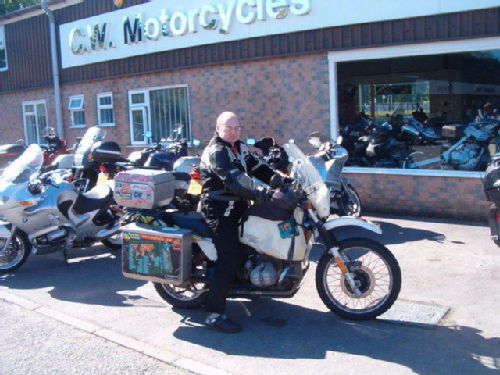
And Martin:
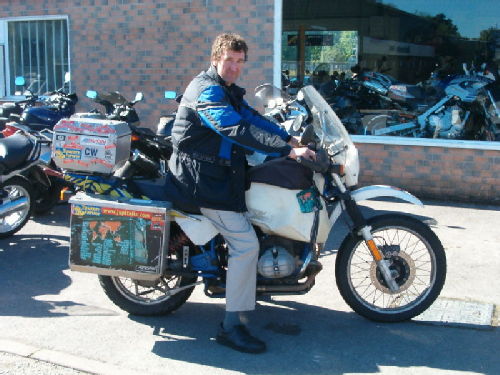
Notice the photo on the side of the pannier, which is of the world map on the side of Ted's original round the world bike from 1972, which is now in Coventry's Transport Museum:
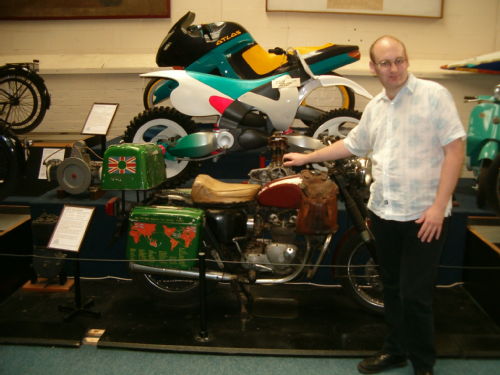
And finally, a photo of our three bkes:
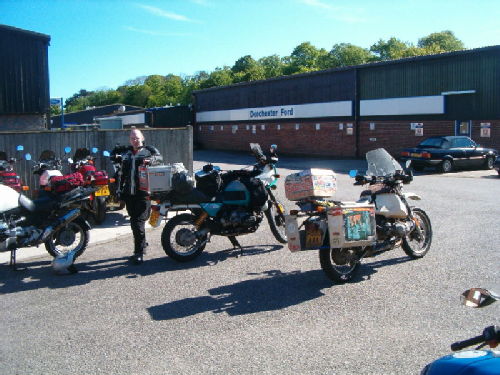
 Robert O'Toole
Robert O'Toole

 Please wait - comments are loading
Please wait - comments are loading
